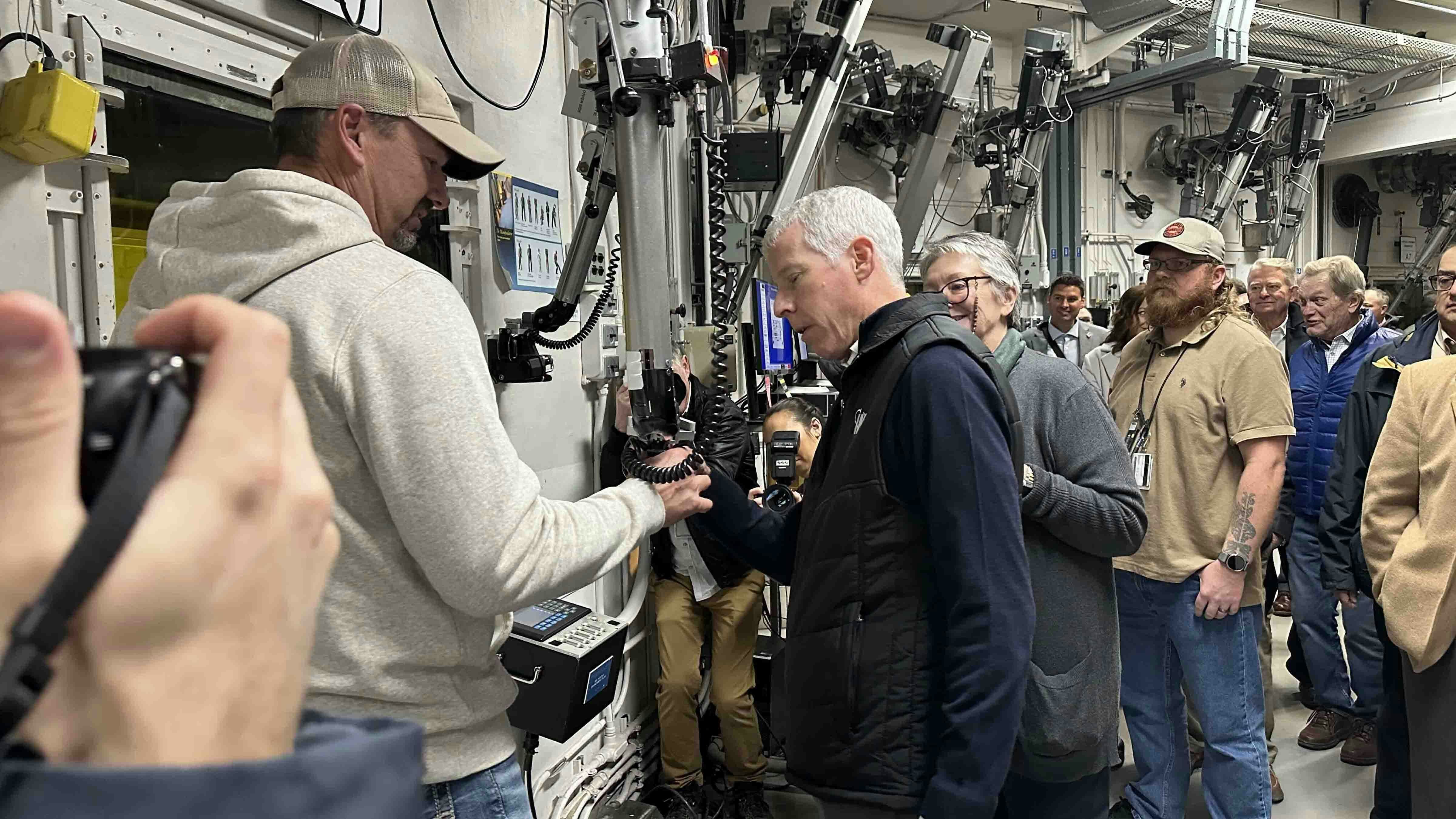Ramaco Resources Inc. is pulling back from a valuation estimate of $37 billion that has been cast about over the past year for critical rare earth minerals discovered underground in Wyoming’s northeastern coal mining region.
In reality, the estimate could shoot higher by billions of dollars as some of the critical minerals on the long list of rare earths magnets have been banned by China for export to the United States — with others under consideration, said the top executive for Lexington, Kentucky-based Ramaco, which has its coal mining operations largely sprawled across central Appalachia.
The supply for rare earths is getting pinched just as demand is growing, effectively driving up the price, Ramaco CEO Randal Atkins told Cowboy State Daily. The new analysis came Wednesday with a presentation made to Wall Street investors by Atkins on a conference call.
A technical report analyzing what minerals are in the ground near Ranchester, Wyoming, in Wyoming’s coal-rich Powder River Basin is expected to be completed later this year. That will give what Ramaco hopes is the best assessment yet of the value of the minerals, what kinds of minerals are in the ground, how deep they are and a first-time, back-of-the-envelope calculation on capital expenditures needed to dig it out.
The last assessment in May 2023 provided a rosy outlook.
The next assessment is expected to show more good signs as the chemistry and geology is better understood – with estimates now placed at roughly 1.5 million pounds of rare earths in the Ranchester region, up from 800,000 last year. That estimate is expected to climb, Atkins said.
“We expect that to substantially increase,” said Alex Moyes, director of critical minerals with Ramaco, in an interview with Cowboy State Daily.
Atkins feels similarly, but is cautiously optimistic about the company’s future path.
“We have come up with fairly strong results that give us critical mass. That makes us feel like we have a potential commercial project,” said Atkins, a former investment banker with J.P. Morgan on Wall Street where he worked merger and acquisition deals in the energy sector.
“We’ve got more testing to do to determine what the economics look like, but by the end of the year, we’ll make further disclosures and look at how we’ll move forward over the next two to three years,” he said.
Military Brass
For sure, Ramaco has already begun some initial digging to see what’s below the old coal mine covering 16,800 acres, thanks to an initiative by military brass who began to worry over a dozen years ago that they wouldn’t have the strategic rare earth magnets to build their sophisticated hypersonic missiles and fighter jets needed to protect America.
The rare earths find in upstate Wyoming is considered one of the biggest in the U.S., if not the largest.
There are many other rivals to Ramaco poking in the dirt around the state. Atkins calls them “junior miners.”
Atkins paid $2 million in 2011 for the old coal mine buried in “soft dirt,” making it easier to claw out of the ground the rare earths than the “hard rock” where other operations are fund. The rare earths in hard rocks must be crushed and processed in a more expensive way than what Ramaco is considering.
Generally, the U.S. can’t develop a rare earths industrial base quick enough to get off its dependency on China.
In fact, the only significant rare earths operation in the U.S. is located just east of Las Vegas in the tiny mining community of Mountain Pass along the Nevada and California border. The mining community may own one of the richest deposits in the world.
China Rules
But the business strategy has China in mind.
In recent years, MP Materials Inc. in the Golden State has shipped 110,231 short tons of rare earths oxides to different refiners in China, according to a regulatory filing with the U.S. Securities and Regulatory Commission.
The filing also states the company sells the vast majority of its rare earth concentrates to Shenghe Resources (Singapore) International Trading Pte. Ltd., a unit of parent Shenghe Resources Holding Co. Ltd., which is traded on the Shanghai Stock Exchange.
The Chinese concerns are real, though Atkins doesn’t want to be critical of a worthy competitor.
There’s been lots of saber-rattling with China over trade disputes, going to war over protecting Taiwan from an invasion and flexing of muscles between the U.S. and China over their military might.
All of this has the U.S. worried that China might cut off its rare earths pipeline to the U.S. After all, it wouldn’t be the first time that China has cut off someone’s pipeline.
The poster child for such action actually happened in 2010 when China got into a spat with Japan and cut off rare earth supplies to that nation, only later to back off of the move.
Pat Maio can be reached at pat@cowboystatedaily.com.





